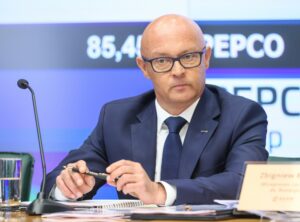3,5 thousand new buses for alternative fuels are to go to the streets of Polish cities in the next 10 years. Currently, there are about 90 electric buses in operation in the country and about 350 CNG gas buses, and another about 180 alternative vehicles have been ordered – according to the report „Alternative fuels in public transport”, presented during on the 20th of March at the Polish Congress of Alternative Fuels. The event was under the patronage of BiznesAlert.pl.
Gas is the winner
– The most popular alternative fuel in public transport is still compressed natural gas. About 420 CNG powered buses are in operation or will soon be put into operation in large Polish cities, which is 3,5 percent of all public transport buses registered in Poland. About 190 are used or soon to be included in the operation of electric buses. That is 1,5 percent of all city buses registered in Poland – says Dorota Kacprzyk, President of IGKM.
– Potential demand for buses powered by alternative fuels over the next 10 years is estimated at even 3,5 thousand vehicles – says Maciej Mazur, Managing Director of PSPA. – Electric buses will be have the greatest interest in the market, the number of which in the period from 2018 to 2023 may increase by approximately 1000-1500 units. Demand for e-buses is already at a very high level today, also in comparison with other European countries. Poland is in the strict group of European electromobility leaders in the area of public transport, leaving behind Norway, or Germany, that is countries that lead in the numbers of personal electric vehicle registration. Zero-emission collective communication is becoming our specialty also because we have a very well-developed production sector, with one of the world leaders in the lead, namely Solaris. The largest tenders are also announced, and market development is additionally stimulated by state institutions, for example under NCBiR programs, which is an opportunity for such companies as Autosan.
CNG is cheaper than electricity
Although the assumptions of the Act on electromobility and alternative fuels prefer the purchase of electric buses, due to their still high cost, it can be expected that a significant part of communes will prefer the purchase of buses powered by CNG. Demand for this type of vehicles from 2018 to 2023 was estimated in a report on approximately 800-1000 buses on CNG.
– CNG powered buses will most likely be treated as a cheaper, low-emission alternative to electric buses or rolling stock diversification. The CNG bus market has the greatest development potential in smaller municipalities and longer routes, eg suburban ones. The range of the bus on CNG is 350-400 km, compared to the counterparts powered ON 600-900 km. The range of e-buses is currently 120-230 km – says Dorota Kacprzyk, President of IGKM.
In the case of construction of CNG refueling infrastructure, in order to achieve a synergy effect, it is also possible to provide it for other fleets of municipal vehicles like garbage trucks. This is also a chance for CNG.
– In this area the Warsaw MPO shows a good practice – in the fleet of 90 commercial vehicles 33 garbage trucks are powered by CNG. According to the company, the cost of buying fuel is 40 percent lower than for diesel vehicles. These types of vehicles affect the reduction of smog, and quieter engine work on CNG is more friendly in urban development – says Maciej Mazur from PSPA.
The support system for other alternative fuels, including CNG, is currently less promoted than electromobility, but according to experts, due to the potential costs and operational advantages, this market will also grow, albeit at a lower pace than electric buses. This will happen, among others thanks to the announced reduction in excise tax on gaseous fuels. Therefore, the goal for Polish local governments should be to promote low-emission solutions that exploit the synergy between electromobility and gas-mobility.








